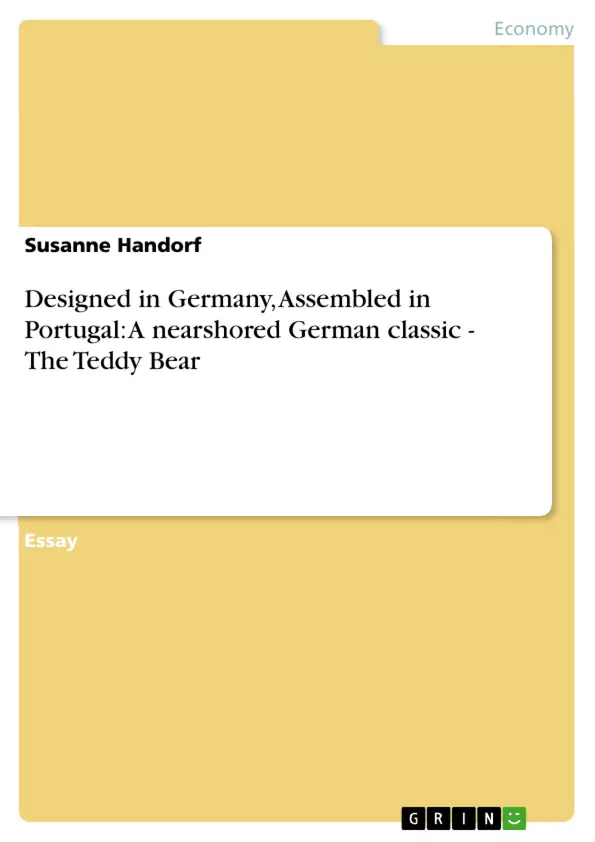Dieser Essey setzt sich prägnant mit dem Unternehmen Steiif und seiner Lösung des Nearshorings auseinander. Die Gründe gegen das Outsourcing werden angerissen. Die Theorie wird anhand von Porters Diamond erklärt.
Inhaltsverzeichnis (Table of Contents)
- Situation & Complication until 2009 - Outscourcing to China.
- The current Solution - Nearshoring as Steiffs' Global Strategy
- Conclusion
- Appendix
- References
- Declaration
- Table of Figures
Zielsetzung und Themenschwerpunkte (Objectives and Key Themes)
This essay explores the global strategy of nearshoring, particularly focusing on the case of Steiff, a German teddy bear manufacturer. It analyzes the challenges faced by the company with outsourcing to China, the reasons for shifting production to Portugal, and the potential benefits and risks of nearshoring for the company's future.
- The challenges of outsourcing to China for a company like Steiff, known for high-quality products.
- The concept of nearshoring as a strategic option for global companies.
- The specific case of Steiff's nearshoring venture to Portugal, analyzing the factors driving the decision and potential benefits.
- The sustainability of nearshoring as a global strategy in the long term.
- The comparison of nearshoring with other globalization strategies, such as offshoring and insourcing.
Zusammenfassung der Kapitel (Chapter Summaries)
- Situation & Complication until 2009 - Outscourcing to China: This chapter discusses the global toy manufacturing market dominated by Chinese competition. Steiff's decision to outsource part of its production to China is analyzed, highlighting the challenges they faced, including quality control issues and communication difficulties. The chapter also discusses the limitations of outsourcing, including difficulties in meeting German quality standards and the lack of flexibility in production.
- The current Solution - Nearshoring as Steiffs' Global Strategy: This chapter explores the concept of nearshoring as a strategic option for companies like Steiff. It examines the advantages of nearshoring, including lower costs, improved quality, and greater flexibility in production. The chapter specifically focuses on Steiff's nearshoring venture to Portugal, discussing the factors driving the decision and the potential benefits. It also explores the economic and business environment in Portugal, including its labor market and its attractiveness as a nearshoring location.
Schlüsselwörter (Keywords)
The key words and focus topics of this essay include nearshoring, globalization strategy, outsourcing, offshoring, insourcing, global toy manufacturing market, Steiff, Portugal, China, quality control, production costs, labor costs, competitive advantage, and sustainability.
- Quote paper
- Susanne Handorf (Author), 2010, Designed in Germany, Assembled in Portugal: A nearshored German classic - The Teddy Bear, Munich, GRIN Verlag, https://www.grin.com/document/167040



